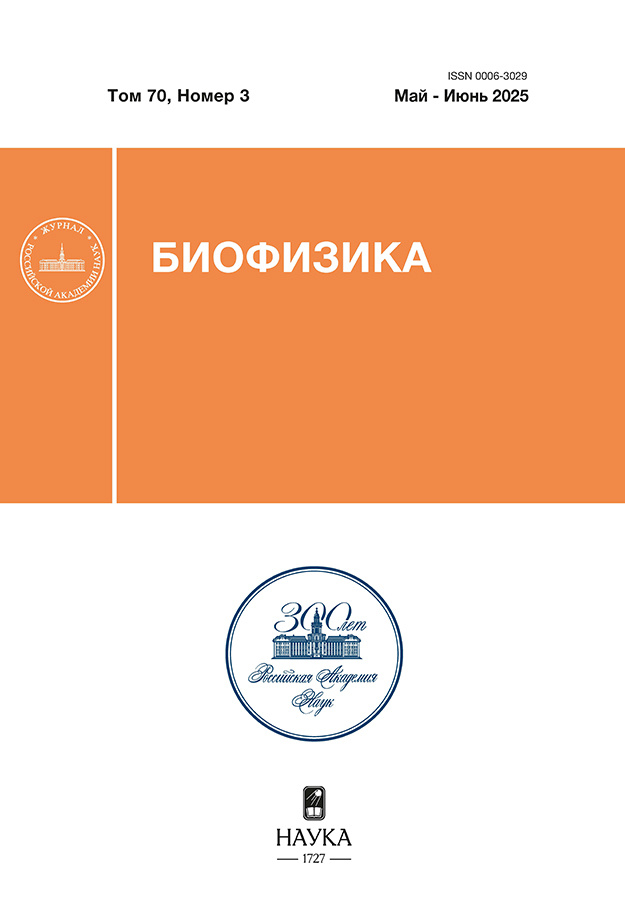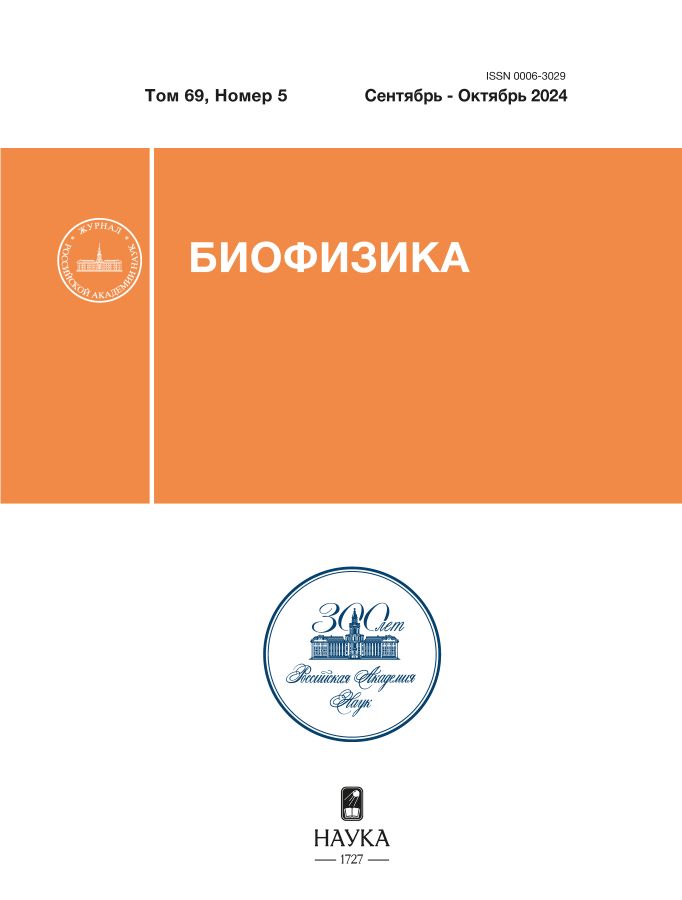ОЦЕНКА АФФИННОСТИ СВЯЗЫВАНИЯ В КОМПЛЕКСАХ ACE2–RBD S-БЕЛКА КОРОНАВИРУСОВ С ИСПОЛЬЗОВАНИЕМ СВЕРТОЧНЫХ НЕЙРОННЫХ СЕТЕЙ
- Авторы: Богданова Е.А1, Чернухин А.В2, Шайтан К.В1, Новоселецкий В.Н3
-
Учреждения:
- Московский государственный университет имени М.В. Ломоносова
- Российский химико-технологический университет имени Д.И. Менделеева
- Университет МГУ-ППИ в Шэньчжэне
- Выпуск: Том 69, № 5 (2024)
- Страницы: 979-989
- Раздел: Молекулярная биофизика
- URL: https://rjonco.com/0006-3029/article/view/676116
- DOI: https://doi.org/10.31857/S0006302924050053
- EDN: https://elibrary.ru/MKJZVI
- ID: 676116
Цитировать
Полный текст
Аннотация
Проведена оценка экспериментально полученных структур 48 комплексов рецептора ACE2 с RBD S-белка коронавирусов SARS-CoV и SARS-CoV-2 (включая мутантные формы последнего), для которых рассчитана константа диссоциации. Для предсказания аффинности связывания использован разработанный авторами ранее нейросетевой алгоритм ProBAN, а также ряд других алгоритмов оценки свободной энергии Гиббса: Prodigy, FoldX, DFIRE и RosettaDock. Сопоставление результатов оценки показывает, что ProBAN демонстрирует лучшее качество предсказания (корреляция Пирсона – 0.56, средняя абсолютная ошибка – 0.7 ккал/моль). Полученные результаты позволяют предположить лучшее качество предсказания аффинности и для других белок-белковых комплексов. Информация об исследуемых комплексах и результаты предсказания доступны в репозитории по ссылке: https://github.com/EABogdanova/ProBAN_RBDACE2.
Об авторах
Е. А Богданова
Московский государственный университет имени М.В. ЛомоносоваМосква, 119991, Россия
А. В Чернухин
Российский химико-технологический университет имени Д.И. МенделееваМосква, 125047, Россия
К. В Шайтан
Московский государственный университет имени М.В. ЛомоносоваМосква, 119991, Россия
В. Н Новоселецкий
Университет МГУ-ППИ в Шэньчжэне
Email: novoseletsky@smbu.edu.cn
Шэньчжэнь, 518172, Китайская Народная Республика
Список литературы
- Choudhary S., Sreenivasulu K., Mitra P., Misra S., and Sharma P. Role of genetic variants and gene expression in the susceptibility and severity of COVID-19. Ann. Lab. Med., 41 (2), 129–138 (2021). doi: 10.3343/alm.2021.41.2.129
- Ali A. and Vijayan R. Dynamics of the ACE2-SARSCoV-2/SARS-CoV spike protein interface reveal unique mechanisms. Sci. Rep., 10 (1), 14214 (2020). doi: 10.1038/s41598-020-71188-3
- Vogel M., Augusto G., Chang X., Liu X., Speiser D., Mohsen M. O., and Bachmann M. F. Molecular definition of severe acute respiratory syndrome coronavirus 2 receptor-binding domain mutations: Receptor affinity versus neutralization of receptor interaction. Allergy, 77 (1), 143–149 (2022). doi: 10.1111/all.15002
- Bozdaganyan M. E., Shaitan K. V., Kirpichnikov M. P., Sokolova O. S., and Orekhov P. S. Computational analysis of mutations in the receptor-binding domain of SARS-CoV-2 spike and their effects on antibody binding. Viruses, 14 (2), 295 (2022). doi: 10.3390/v14020295
- Lan J., He X., and Ren Y. Structural insights into the SARS-CoV-2 Omicron RBD-ACE2 interaction. Cell Res., 32, 593–595 (2022). doi: 10.1038/s41422-022-00644-8
- Chothia C. and Janin J. Principles of protein–protein recognition. Nature, 256, 705–708 (1975). doi: 10.1038/256705a0
- Archakov A. I., Govorun V. M., Dubanov A. V., Ivanov Y. D., Veselovsky A. V., Lewi P., and Janssen P. Protein-protein interactions as a target for drugs in proteomics. Proteomics, 3 (4), 380–391 (2003). doi: 10.1002/pmic.200390053
- Shi T. L., Li Y. X., Cai Y. D., and Chou K. C. Computational Methods for protein–protein interaction and their application. Curr. Prot. Peptide Sci., 6, 443–449 (2005). doi: 10.2174/138920305774329313
- Vangone A. and Bonvin A. M. Contacts-based prediction of binding affinity in protein-protein complexes. eLife, 4, e07454 (2015). doi: 10.7554/eLife.07454
- Purisima E. O., Corbeil C. R., Gaudreault F., Wei W., Deprez C., and Sulea T. Solvated interaction energy: from small-molecule to antibody drug design. Front. Mol. Biosci., 7 (10), 1210576 (2023). doi: 10.3389/fmolb.2023.1210576
- Jawad B., Adhikari P., Podgornik R., and Ching W. Y. Key interacting residues between RBD of SARS-CoV-2 and ACE2 receptor: combination of molecular dynamics simulation and density functional calculation. J. Chem. Inf. Model., 61 (9), 4425–4441 (2021). doi: 10.1021/acs.jcim.1c00560
- Salleh M. Z., Derrick J. P., and Deris Z. Z. Structural evaluation of the spike glycoprotein variants on SARSCoV-2 transmission and immune evasion. Int. J. Mol. Sci., 22 (14), 7425 (2021). doi: 10.3390/ijms22147425
- Yang Y., Zhang Y., Qu Y., Zhang C., Liu X. W., Zhao M., Mu Y., and Li W. Key residues of the receptor binding domain in the spike protein of SARS-CoV-2 mediating the interactions with ACE2: a molecular dynamics study. Nanoscale, 13 (20), 9364–9370 (2021). doi: 10.1039/d1nr01672e
- Zhang Z. B., Xia Y. L., Shen J. X., Du W. W., Fu Y. X., and Liu S. Q. Mechanistic origin of different binding affinities of SARS-CoV and SARS-CoV-2 spike RBDs to human ACE2. Cells, 11 (8), 1274 (2022). doi: 10.3390/cells11081274
- Xue L. C., Rodrigues J. P., Kastritis P. L., Bonvin A. M., and Vangone A. PRODIGY: a web server for predicting the binding affinity of protein-protein complexes. Bioinformatics, 32 (23), 3676–3678 (2016). doi: 10.1093/bioinformatics/btw514
- Schymkowitz J., Borg J., Stricher F., Nys R., Rousseau F., and Serrano L. The FoldX web server: an online force field. Nucl. Acids Res., 33, W382–W388 (2005). doi: 10.1093/nar/gki387
- Zhang C., Liu S., and Zhou Y. Accurate and efficient loop selections by the DFIRE-based all-atom statistical potential. Prot. Sci., 13 (2), 391–399 (2004). doi: 10.1110/ps.03411904
- Lyskov S., and Gray J. J. The RosettaDock server for local protein-protein docking. Nucl. Acids Res., 36, W233–W238 (2008). doi: 10.1093/nar/gkn216
- Bogdanova E. A., Novoseletsky V. N., and Shaitan K. V. Binding affinity prediction in protein-protein complexes using convolutional neural network. In Advances in Neural Computation, Machine Learning, and Cognitive Research VII (NEUROINFORMATICS 2023). Ed. by B. Kryzhanovsky, V. Dunin-Barkowski, et al. (Springer, Cham., 2023), pp. 389–397. doi: 10.1007/978-3-031-44865-2_42
- Bogdanova E. A. and Novoseletsky V.N. ProBAN: neural network algorithm for predicting binding affinity in protein-protein complexes. Proteins, 92 (9), 1127– 1136 (2024). doi: 10.1002/prot.26700
- Wang R., Fang X., Lu Y., Yang C. Y., and Wang, S. The PDBbind database: methodologies and updates. J. Med. Chem., 48 (12), 4111–4119 (2005). doi: 10.1021/jm048957q
- Moal I. H., Jiménez-García B., and FernándezRecio J. CCharPPI web server: computational characterization of protein-protein interactions from structure. Bioinformatics, 31(1), 123–125 (2015). doi: 10.1093/bioinformatics/btu594
- Pyrkov T. V., Chugunov A. O., Krylov N. A., Nolde D. E., and Efremov R. G. PLATINUM: a web tool for analysis of hydrophobic/hydrophilic organization of biomolecular complexes. Bioinformatics, 25 (9), 1201–1202 (2009). doi: 10.1093/bioinformatics/btp111
- Humphrey W., Dalke A., and Schulten K. VMD: visual molecular dynamics. J. Mol. Graphics, 14 (1), 33–28 (1996). doi: 10.1016/0263-7855(96)00018-5
- Su C., He J., Han P., Bai B., Li D., Cao J., Tian M., Hu Y., Zheng A., Niu S., Chen Q., Rong X., Zhang Y., Li W., Qi J., Zhao X., Yang M., Wang Q., and Gao G. F. Molecular basis of mink ACE2 binding to SARS-CoV-2 and its mink-derived variants. J. Virology, 96 (17), e0081422 (2022). doi: 10.1128/jvi.00814-22
- Han P., Su C., Zhang Y., Bai C., Zheng A., Qiao C., Wang Q., Niu S., Chen Q., Zhang Y., Li W., Liao H., Li J., Zhang Z., Cho H., Yang M., Rong X., Hu Y., Huang N., Yan J., Wang Q., Zhao X., Gao G. F., and Qi J. Molecular insights into receptor binding of recent emerging SARS-CoV-2 variants. Nature Commun., 12 (1), 6103 (2021). doi: 10.1038/s41467-021-26401-w
- Wang Q., Zhang Y., Wu L., Niu S., Song C., Zhang Z., Lu G., Qiao C., Hu Y., Yuen K. Y., Wang Q., Zhou H., Yan J., and Qi J. Structural and functional basis of SARS-CoV-2 entry by using human ACE2. Cell, 181 (4), 894–904 (2020). doi: 10.1016/j.cell.2020.03.045
- Starr T. N., Greaney A. J., Hannon W. W., Loes A. N., Hauser K., et al. Shifting mutational constraints in the SARS-CoV-2 receptor-binding domain during viral evolution. Science (New York), 377 (6604), 420–424 (2022). doi: 10.1126/science.abo7896
- Geng Q., Shi K., Ye G., Zhang W., Aihara H., and Li F. Structural basis for human receptor recognition by SARS-CoV-2 Omicron variant BA.1. J. Virology, 96 (8), e0024922 (2022). doi: 10.1128/jvi.00249-22
- Nelson-Sathi S., Umasankar P. K., Sreekumar E., Nair R. R., Joseph I., Nori S. R. C., Philip J. S., Prasad R., Navyasree K. V., Ramesh S., Pillai H., Ghosh S., Santosh Kumar T. R., and Pillai M. R. Mutational landscape and in silico structure models of SARS-CoV-2 spike receptor binding domain reveal key molecular determinants for virus-host interaction. BMC Mol. Cell Biol., 23 (1), 2 (2022). doi: 10.1186/s12860-021-00403-4
- Kastritis P. L., Rodrigues J. P., Folkers G. E., Boelens R., and Bonvin, A. M. Proteins feel more than they see: Fine-tuning of binding affinity by properties of the non-interacting surface. J. Mol. Biol., 426 (14), 2632–2652 (2014). doi: 10.1016/j.jmb.2014.04.017
- Reichmann D., Phillip Y., Carmi A., and Schreiber G. On the contribution of water-mediated interactions to protein-complex stability. Biochemistry, 47 (3), 1051– 1060 (2008). doi: 10.1021/bi7019639
- Schweke H., Mucchielli M. H., Sacquin-Mora S., Bei W., and Lopes A. Protein interaction energy landscapes are shaped by functional and also non-functional partners. J. Mol. Biol., 432 (4), 1183–1198 (2020). doi: 10.1016/j.jmb.2019.12.047
- Ozden B., Şamiloğlu E., Özsan A., Erguven M., Yükrük C., Koşaca M., Oktayoğlu M., Menteş M., Arslan N., Karakülah G., Barlas A. B., Savaş B., and Karaca E. Benchmarking the accuracy of structure-based binding affinity predictors on Spike-ACE2 deep mutational interaction set. Proteins, 92 (4), 529–539 (2024). doi: 10.1002/prot.26645
Дополнительные файлы











